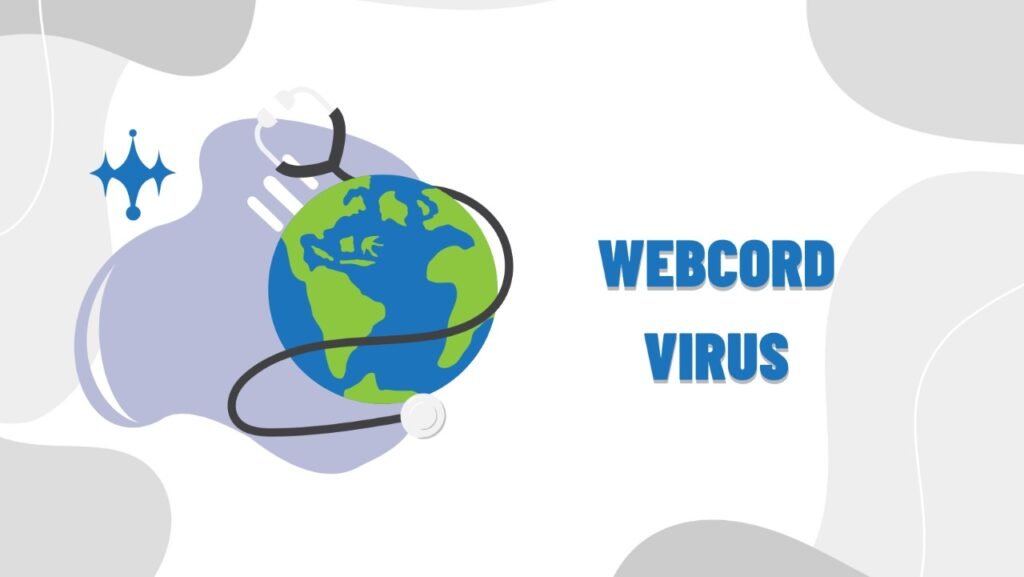The Webcord Virus may not be popular among computer security experts. Still, the concept of web application malware similar to Discord (a famous chat platform) has been cited as an emerging issue. This article explores what these viruses are, how they affect people, and how individuals and businesses can protect themselves.
Table of Contents
ToggleWebcord Virus: What is it?
The Basics
The so-called “Webcord Virus” stands for malicious software that targets users of online communication platforms. Although “Webcord” isn’t a currently known virus that can infect users’ PCs, this term includes different forms of threats that can take advantage of features available in web-based chat apps to spread malware, phish for confidential data, or carry out other malevolent activities.
How does it work?
Malware of this kind often spreads through chat-based phishing messages, malicious links, or infected attachments. When an unsuspecting user clicks on a link or downloads an attachment containing such malware, the latter enters their device, thereby leading to possible spying and information theft, among other things.
Impacts of the Webcord Virus
Individual Users
For individuals, repercussions could involve compromising their personal information and financial loss resulting from fraud. These effects not only lead to substantial stress and financial loss but also carry the risk of identity theft.
Organizations
On the other hand, organizations face even more severe consequences. It takes just one breach to compromise sensitive company data, including customer records, IP addresses, and staff conversations. This leads to reputation damage and legal fines, particularly when there is negligence in implementing good cyber practices on behalf of the organization.
Safeguarding Against Webcord Virus
Strengthening Security Measures
Use Trusted Antivirus Software: Ensure all devices have modern antivirus software equipped with mechanisms for detecting and removing malware.
Frequently Updated: Keep all systems and applications current. Many malware attacks exploit existing software vulnerabilities that have already been fixed by the developers.
Promoting Awareness and Education
Training and Awareness Programs: Regularly train every user regarding the significance of cybersecurity. This will enable them to identify phishing efforts and harmful links.
Safe Browsing Practices: Encourage the use of strong, unique passwords for different accounts and two-factor authentication where possible.
Implementing Advanced Security Protocols
Network Security: Employ firewalls, encryption and secure access protocols to secure your network.
Incident Response Plan: Have a comprehensive incident response plan in place. This should detail what steps to take when systems are infected, malware is eradicated, and data is restored from backup copies, among other things.
Conclusion
Although the “Webcord Virus” as an entity might not be known yet as a specific threat, malware focused on online communication users is real. These digital risks can then be eliminated if they are understood properly with their natures, possible outcomes incorporated with robust protective measures in effect for individuals and firms. Cyber security lies in alertness, knowledge, and holistic security approaches, including training on all aspects of this domain.
FAQs:
What is the Webcord Virus?
The term “Webcord Virus” refers to hypothetical malware that attacks people who use web-based communication platforms. Such viruses can spread malicious software, phishing information, or other malicious activities utilizing this medium. It should be noted that “Webcord” is not a specific virus, but there may be some types of threats it might represent when it comes to internet communicators like emails or chats.
How does malware propagate across web-based communication platforms?
Among the ways malware can spread on these platforms are through phishing messages, malicious links, or compromised files within the chat. Clicking a harmful link or downloading an infected file by a user will enable the malware to install itself on their device, leading to various security issues like data theft or further distribution of the malware.
What are some indications that my device is infected with malware?
Some common signs include sudden pop-ups, massive decreases in device performance. Frequent crashes, unauthorized settings adjustments, and unexpected actions in your online accounts. If you notice any of these symptoms, it is necessary to run an antivirus scan thoroughly and get professional assistance when needed.
How do I avoid getting malware on web-based communication platforms?
Never click on suspicious links or download files from unknown sources to protect yourself. Keep updating your antivirus software and perform regular scans. Use strong passwords for each account and have two-step verification where possible. Be aware of the most popular phishing techniques and learn about cyber-security best practices.
If I suspect malware has infected my device, what should I do?
If you think your computer may be affected by malware. Disconnect it from the internet so that no more data will get lost during this period and stop its spread through networks. It is important to carry out a complete system scan using antivirus software. If the software detects any malicious program. Follow their instruction to remove it. In addition, consider changing passwords for all your online accounts, particularly if sensitive information may have been compromised. For difficult cases where none of these measures seem effective, contact a professional technical support service for extensive gadget cleaning.
Read also: The Mysteries Of QXEFV Exploring Its Significance And Impact












1 thought on “Webcord Virus: Understanding and Protection”